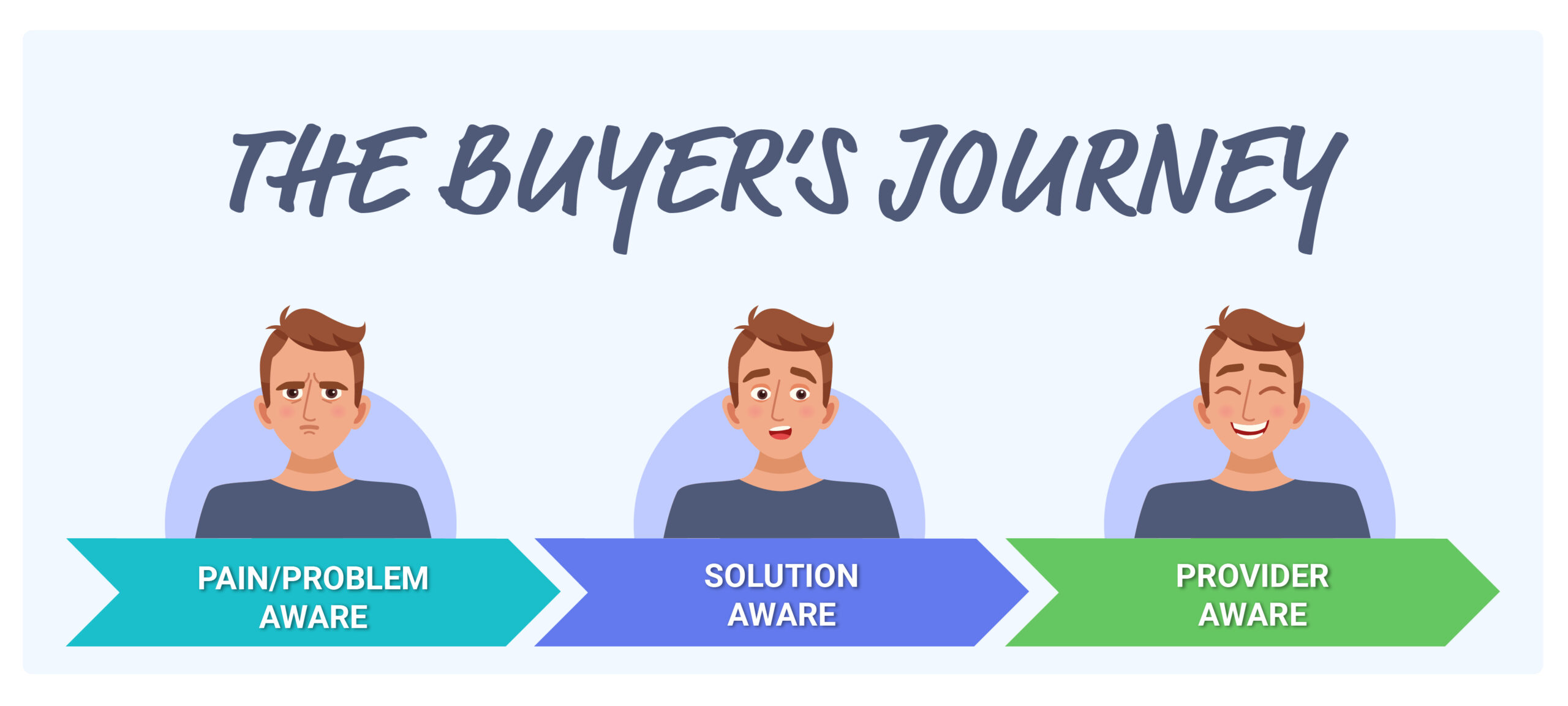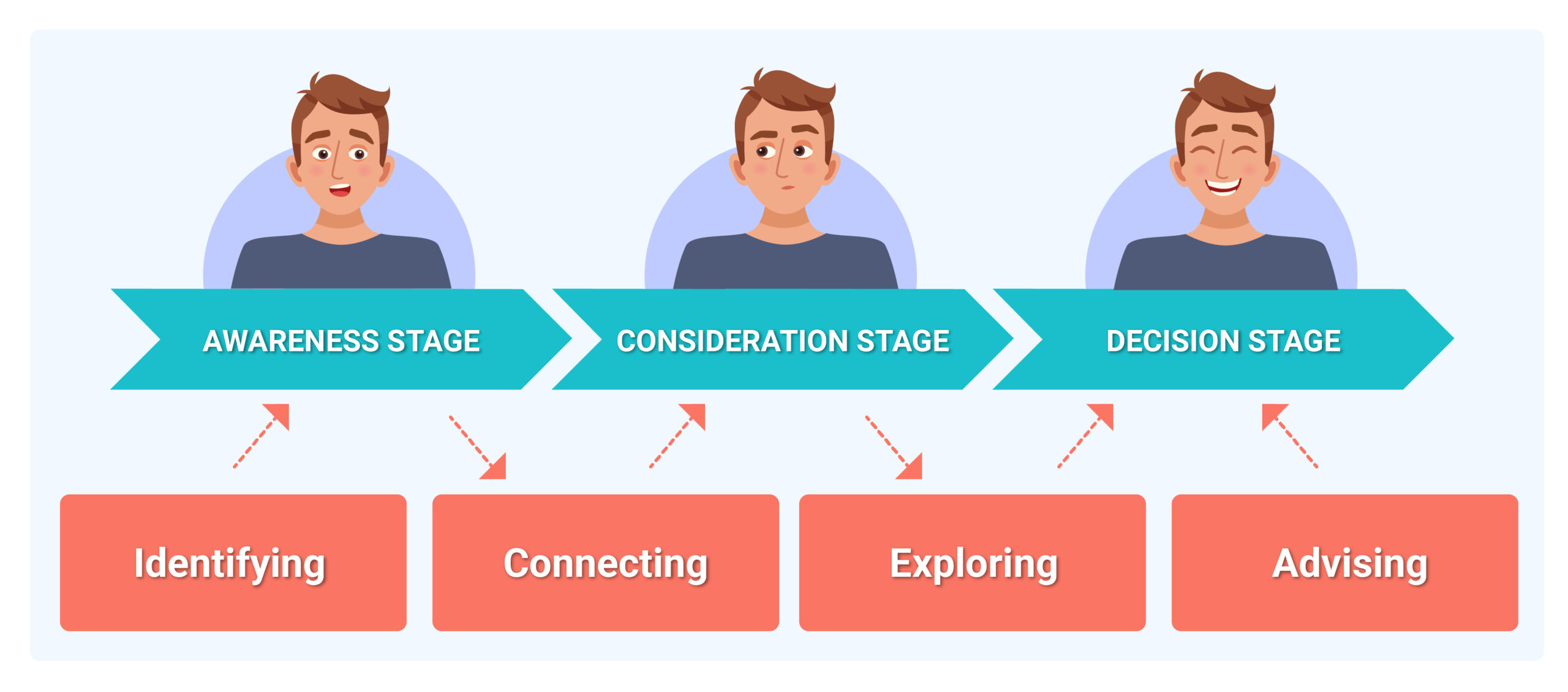There was a time when sales were only about hard selling. Sales reps used to make cold calls and emails in the hope of getting a positive response. Then the buying process changed.
Customers began to say no to old-school sales strategies and yes to establishing partnerships with the firms they were buying from. As a result, the industry has pushed into a new way of selling – Inbound Sales.
When both your marketing and sales teams adopt inbound programs, you can qualify your leads and provide them with an informative, engaging experience at every stage of the buyer’s journey.
This detailed inbound sales guide will help learn why inbound works for B2B companies and how you can create an ideal inbound sales strategy for your team.
What is Inbound Sales? – An Overview
Inbound sales is a personalized, consultative, and modern sales strategy. Inbound salespeople focus on friction points, act as trusted consultants, and adapt their sales process to the customer’s path.
Instead of gathering cold leads, prospects are discovered when they express interest in your company and product. Prospects raise their hand through an email or form or other means. Then you begin sales outreach to guide and inform prospects in their buying journey.
What is an inbound sales rep?
An inbound sales rep sells products and services to prospective consumers who generally contact them via phone.
What is the difference between a sales process and an inbound sales strategy?
A sales process includes the actions taken by a seller within a sales cycle, whereas an inbound sales strategy describes the actions taken by a customer.
Why Inbound Sales Works
As a sales leader, it is imperative to your success that your team puts the buyer’s needs above your own. The inbound sales approach helps you and your team do just that. Here are the top three reasons why inbound works for B2B companies specifically.
Today’s Buyers Are Different
As the buyer’s approach to buying has changed, businesses need to adapt. The days of cold-calling have passed. However, only the “cold” is dead, not the calling. We are in the age of learning, and consumers are more educated than ever before. Powered with their own research, they keep themselves away from conventional hard-selling strategies that are potentially divisive, frustrating, and adversely viewed.
When purchasing behavior shifts and customers have access to infinite knowledge, sales reps need to find new opportunities to add value beyond what a prospect would already know. Inbound Sales work because it has evolved to consider this transition of behavior and provides consumers with the tailored process they need.
Aligns with Inbound Marketing
Inbound Marketing and Inbound Sales grow hand in hand. Previously, the difference between marketing and sales looked as if you are on the other side of the Grand Canyon. Now, this distance is coming together with the advent of smarketing – and it makes sense, especially with the Inbound Sales approach.
Technically, the sales process begins at the same time as the marketing process starts. Let the sales and marketing departments build a dynamic that nurtures the best leads and “advises” them at the right moment – leading to more sales opportunities.
Inbound Sales Creates Brand Ambassadors
If you have followed the process and built a genuine relationship with your buyers, they will be delighted with your product. They will understand the value of your service and will be open to telling their contacts about you. As a B2B company, creating brand ambassadors is even more valuable as these clients often have a larger network and more clout.
Clients who have an exceptional experience with your business can be engaged on an ongoing basis so that they can highly recommend you to their networks, clients, and partners.
If you are at a stage where you are using Inbound Marketing to generate leads, then it’s time to take the next logical step and incorporate an inbound sales strategy to help your business grow its sales success.
Creating a Perfect Inbound Sales Strategy
Traditionally, salespeople have held more control over sales meetings because they had all the information prospects needed. Now all of that information and options are readily available online.
Buyers no longer need to go straight to a salesperson to make an order. Building a perfect inbound sales strategy is the key to mastering this change. However, a successful inbound sales strategy needs a thorough understanding of each step.
Step 1: Define Your Buyer’s Journey.
Step 2: Develop a Sales Process That Supports the Buyer’s Journey.
Step 3: Keep Educating the Buyers
Let’s dive deeper.
Step 1: Define Your Buyer’s Journey
Traditional sales teams create their sales process around their interests, not the needs of their customers. They focus on “checking the boxes” provided by their sales manager instead of listening to the customer and helping them through the buying process.
Inbound sales teams avoid checking boxes by considering the buyer’s journey. Before they even pick up a call or send an email, an inbound sales team prioritizes the view of their customer.
Here’s the three-stage buyer’s journey you should start with:

AWARENESS

During the awareness phase, buyers determine the challenges they are facing or the objective they want to achieve and then determine whether it should be a priority. To truly understand the awareness stage, ask yourself:
- How do customers identify the problems or objectives of your product addresses?
- How do customers read more about these problems or objectives?
- How do buyers decide whether to prioritize the challenge or goal?
CONSIDERATION

At the point of evaluation, customers have specifically established their task or objective and are committed to solving it. They analyze the various products or services available to overcome their problem. To understand this stage, you can consider the following questions:
- What types of options do customers investigate? Meaning what type of resources/ information they need at this stage?
- What are the possible pros and cons they may see if they are looking for products similar to yours?
- Do you have the resources/ material available?
DECISION

At the decision point, the buyers settled on a solution group. They draw up a list of unique deals and suppliers in their preferred group and settle on one that best suits them. To be good at the decision-making stage, ask yourself:
- What kind of offers do consumers usually evaluate?
- What requirements are used by consumers to assess the available offerings?
- What makes your proposal distinctive in the eyes of the buyer?
- Do you have past success stories that can relate to your buyer’s situation?
- Who wants to be included in this decision? How does each stakeholder’s opinion of the decision differ?
Get Your Free Data Now!
Step 2: Map the Buyer’s Journey with a Sales Process
Once you have defined the buyer’s journey, the next step is to set up the sales process. Unlike legacy sales teams that first plan a sales process, inbound sales teams create a sales process after the buying journey has been established.
Think about what type of activities your sales team should be executing to support the buyers in their business.
IDENTIFY

During the Identify stage, legacy salespeople are unaware of which buyers are active in a buying journey. Instead, legacy reps identify buyers they believe are a good fit and start calling those buyers randomly.
Here’s the problem: Many buyers have already entered the Awareness stage of the buying journey before they engage with salespeople.
Inbound salespeople can separate active from passive buyers. They focus their time on prospects who are already in the awareness stage of the buying journey. They may have recently visited the company website, filled out a form, opened one of the salesperson’s emails, or left a clue of their need in some other way.
To identify the best prospects from the inbound leads, SalesIntel helps you to enrich limited data to complete and valuable data that includes information such as company size, annual turnover, and technology stack.
CONNECT
During the Connect phase, traditional sales professionals center their prospecting activities on cold emails and cold calls. This cold outreach highlights the same conventional elevator pitch and aims to lure customers with offers to schedule a product demo or a quick presentation.
Modern buyers, however, do not focus on sales reps’ messages to hear about goods and services. This information is readily available online whenever the purchaser is interested.
When inbound sales professionals reach out to customers, they send a buyer-centric tailored message. The context could be the buyer’s industry, position, intent, or technology stack. Inbound salespeople make their message associated with the identified stage of the buyer’s journey. For example, inbound salespeople can give a free consultation or an ebook on the region the purchaser is investigating in the awareness or consulting stages.
Most of the B2B sales professionals rely on LinkedIn to connect with their prospects. However, it is often a ‘try-your-luck’ approach. However, using free email extractors like RevDriver, you can extract complete data of your prospects from LinkedIn along with their email address (even if they are not in your network).
Download RevDriver Now
EXPLORE
During the Explore process, legacy salespeople turn to presentation mode when the customer shows interest. However, legacy salespeople do not grasp the buyer’s needs well enough to produce a value-added presentation. A value-added presentation also has to be delivered. Since the buyer context is underdeveloped, legacy salespeople go back to standardized selling points, outlining details that buyers already have access to.
Inbound salespeople recognize they do not have the level of trust and understanding with the buyer to immediately pitch them on the product. Inbound salespeople are not even sure whether they can help the buyer at this stage. They know they need to listen, and then enter into a conversation.
Through proper value positioning, data analysis, and a strategic questioning process during the Explore stage, inbound salespeople guide prospects to draw their conclusions about whether a product is right for their needs.
ADVICE
At the Advice level, legacy salespeople offer the same presentation and case studies to all customers. Legacy salespeople might do light exploration about the needs of the buyer — just enough to know there might be interest. Then, they go back on autopilot and give their generic spiel.
On the other side, inbound salespeople customize the pitch to the buyer’s context, using the details obtained while building their relationship. You deliver a tailored presentation about how your offer is ideally positioned to fulfill their unique needs. Prospects on the buyer’s journey want to learn how the specifics of your solution will help them. Address their current setup and business as much as possible.
The inbound salesperson acts as a translator between the generalized message on your website and the unique needs of the prospect.
Step 3: Keep Educating the Buyers
If you’ve done your job right, you’ve already done a requirements review, tailored a plan, closed a hearing, and started to discuss key details of a potential deal. The art of inbound selling is to find the pressure points of the consumer and then explain how your product fixes their specific issues.
You can sum up everything you said to help them visualize what they’ll get. You should always show empathy to their problem and provide a solution to it. You will have to resolve their roadblocks and misinformation along the way — often one issue at a time — until they are excited to sign the contract.
Inbound Sales FAQ
Q. What Are The Phases of an Inbound Sales Strategy or Framework?
Ans. –
- Awareness
- Consideration
- Decision
Q. What Are The Four Stages of The Inbound Sales Methodology?
Ans. –
- Identify
- Connect
- Explore
- Advice
Q. What Is The Goal of The Identify Phase of an Inbound Sales Strategy?
Ans. – The goal of Identify phase of an inbound sales strategy is identifying good-fit leads from a broad pool of eligible prospects.
Q. How to Increase Inbound Sales Conversion?
Ans. – Identifying the stage of the inbound leads in the buyers’ journey and providing them the data accordingly is the key to increasing inbound sales conversions.
Q. What is Inbound Closing?
Ans. – Closing deals with inbound means continuous segmentation and nurturing – as well as your sales staff. Nurturing the inbound lead from the decision stage to actual buying customer is inbound closing.
Q. What Kinds of Information Does Your Sales Team Likely Need to be Included in Each Persona?
Ans. – Creating a buyer persona or an ideal customer profile is crucial for your inbound efforts. Here’s a detailed article that will help you to create your ideal customer profile.
Ans. – It is simply promoting and selling your product on social media. Potential customers would approach you from the content that you post on the social channels.
Wrapping-Up
At the end of the day, you want to make sure that you focus on adding value to your potential buyers. You want to make sure that you are friendly, helpful, and attentive.
You want to make sure that you are great at guiding your prospects and become their go-to expert in your field. You want to follow a methodology and have a strategy in place to help your sales team sell in a non-spammy, non-pushy manner.
If you would like help in discovering which prospects are already starting their buying journey, connecting to decision-makers, and informing your team on the situation of your prospects, consider a SalesIntel trial. SalesIntel helps you to identify the right-fit, get a deeper understanding of your potential buyers using the right data, and reach them at the right time using human-verified direct-dials.







